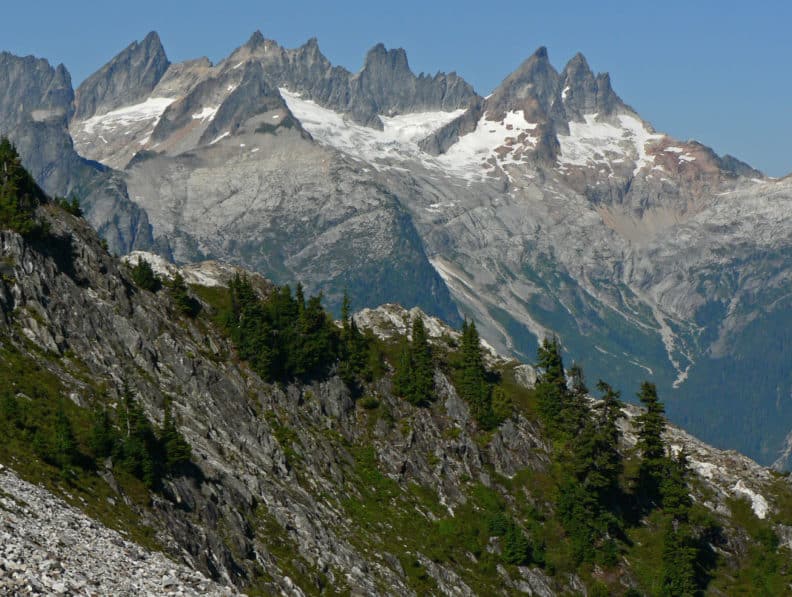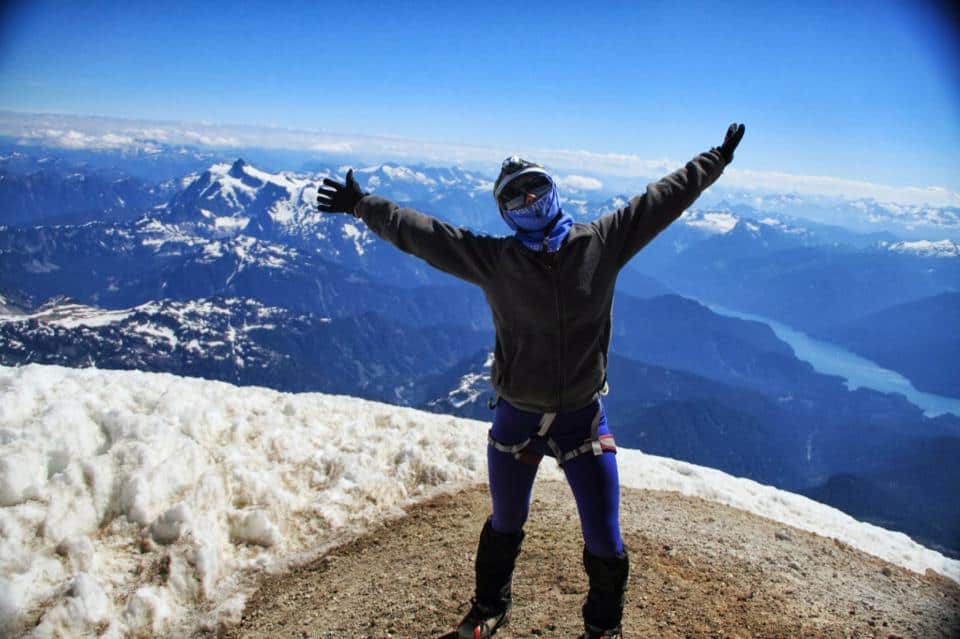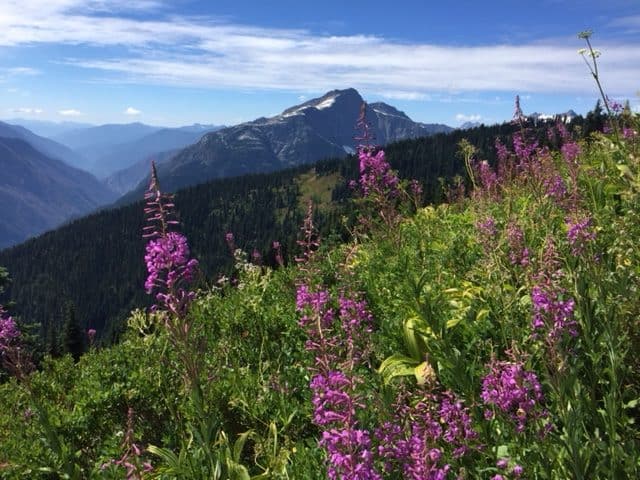
A Peek into Wilderness, part two
This Naturalist Note was written by graduate student, and blog writer Montana Napier as part of the Fall Natural History Project In North Cascades Institute’s M.Ed. Residency coursework. You can view other students’ work here.
What has drawn you to the North Cascades?
A “sea of peaks” from the roadside. Blue glacial lakes. Tumbling waterfalls. A family connection to this place. The inspiration or challenge of ascending vertical faces. Skiing. Wildlife tracks in the mud. Salmon swimming in the Skagit River, or soaring eagles above. The beauty of meadows blanketed in wildflowers. A walk through old-growth forest, dominated by Douglas fir and Western red cedars – a feeling of solitude and peace among green boughs. Or do you work for North Cascades National Park, for the National Forest, Seattle City Light, or someone else?
These are all excellent reasons to know the area, and there are many more, all with an underlying thread of wildness. One of North Cascades National Park’s most defining characteristics is its wilderness; a reason, I must admit, for why I live in Washington State. Although I grew up on the sandy beaches and cypress swamps of the Florida Panhandle, I never felt much attachment to that landscape, though now I can appreciate its familiarity in adulthood. Mountains inspire me, perhaps a trait I couldn’t escape with a name like Montana, quite literally meaning “mountain.” Is it coincidence or fate?

At the age of eighteen I stood atop the first snow-capped mountain I had ever seen – Mount Baker – in awe of the world below. From every direction, there were panoramic views of jagged peaks, and filling the valley was a stretch of evergreen forest extending on and on into the distance. The immensity of my surroundings, the smallness of my footprints in the snow, and the intense colors of deep, blue-walled crevasses, fiery sunrises and sunsets, black volcanic rock and white terrain, swallowed me whole. I finally felt at home, immersed within the mountains.
Nowadays, I am intrigued by the mystery of places without roads or maintained trails. When I stand on Sourdough Ridge, and catch a glimpse of the elusive Picket Range, I wonder – what is the story of that place? Although only ten miles away from my work at the North Cascades Visitor Center – as the raven flies, there are no roads or trails leading to its heart.

Hikers and climbers experience a primitive landscape, navigating the rugged valleys and mountains by map, compass, good sense, and GPS. In the 1920s, Swedish-American Lage Wernstedt of the US Forest Service finally mapped the subrange, one of the last unmapped locations in the contiguous United States. He named it the Pickets because of its resemblance to a picket fence, contrary to the fence’s symbolic meaning as the American, domestic dream. Since then, little has been done to un-wild this landscape, thanks in part to the 1968 creation of the national park and the 1964 Wilderness Act.
What does the word wilderness mean anyway?
The word comes from the Germanic origin of wilde-deor. Wilde means a natural state, untamed or unconfined – similar to its meaning today. Deor meant deer, or beast. Together, wilderness meant, “A place of wild beasts.” In the 17th century, it was common for European settlers to view wilderness as “A damp and dreary place where all manner of wild beasts deashed about uncooked!” Overtime, the concept has evolved from meaning an uninhabited landscape of scary animals and danger, to its much debated philosophical and legal meanings today. For a good read that examines how our society interprets the word, I suggest “The Trouble with Wilderness” by William Cronon, a critique of modern Environmentalism.
It is difficult for me to look at mountains and not daydream about meandering to the top, in search of a higher vista. Though a self-defined climber, I also do not want to define myself as a climber. To me, curiosity is a driver and not so much a sense of accomplishment or elevation gained; often, the desire is to simply see as much as I can possibly see. When I think of wilderness, civic thinking comes to mind – the fact that people can fight for a place to exist, without resource extraction, in perpetuity. To me wilderness holds more meaning than just human appreciation; it is a network of living connections, and should be treated as such, not a stack of tall rocks or unharvested forest.

Yes, wilderness is a human construct, like all other boundary systems and lines we draw on the land, or values we assign it. But on the other hand, when you go into wilderness itself, there is more to it than that: the predominant voice is not humankind, it is something other. And that affects you. It changes you, just as everything else changes in nature on a constant basis, outside of our five-fingered control. There is an innate feeling of curiosity and connection I experience when I am graced by the mystery and aesthetic of an untamed world, or an unsuspecting wild animal. In these moments, I am reminded of what wilderness means to me, on an intuitive level.
Next time you are hiking in, or staring off into the distance at wilderness, I hope you take a moment to think about what this place and this designation mean to you.
How do you define wilderness?
It is wilderness that is beautiful, dangerous, abundant, oblivious of us, mysterious, never to be second-guess, or known more than a little. It is wilderness that for most of us most of the time is kept out of sight, camouflaged, by the edifices and the busyness and the bothers of humane society.”
~ Wendell Berry

